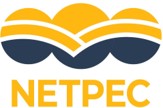Development of Catalysts for the Electroreduction of CO2 (CO2RR) to carbon-rich products
Although most of the research activity in the field of electrochemical CO2 reduction (CO2RR) has advocated the production of chemical fuels or needed chemical feedstock compounds, our goal is projected to employ CO2RR as a negative emission technology (CO2RR-NET).
Within the NETPEC project, HZB will develop and provide efficient catalysts for the electrochemical conversion of CO2 into solid or liquid carbon-rich products that can be disposed of environment-friendly and permanently in geological formations. Solid carbon and oxalates are being considered as products particularly suitable for this purpose. Upscaling and combining these catalysts with optimized perovskite photovoltaic devices from our project partners lead to a solar-driven CO2RR-NET technology, which is the overall goal of the NETPEC project.

While solid catalysts are of well-known significance for electrochemical CO2RR conversion, they are not suitable when the production of solid carbon flakes from CO2 is the main objective because their solid surface can be easily and quickly deactivated by carbon layers in a process known as coking. Liquid metal (LM) alloys, however, promise coking-resistant characteristics as solid products cannot permanently stick to the liquid surface. Therefore, the project work at HZB focuses on LM-electrodes based on GaInSn. Applying LM-catalysts for CO2RR faces several pressing challenges: The CO2RR inactive LM has to be activated by alloying other metals, understanding the fundamentals behind electrochemical reactions at LM/electrolyte interfaces, and identifying the decisive descriptors for activity and selectivity that are needed for the development of next-generation catalysts. Furthermore, the handling of LM-catalysts is completely different from solid electrodes. Techniques have to be developed which enable an upscaling of LM-electrodes for devices.
A key parameter for the performance of the CO2RR-NET devices is solar to carbon efficiency, which is determined at HZB by exposure to calibrated solar simulators and quantitative determination of the products formed. For this purpose, the HZB uses mass spectrometers, ion- and gas-chromatographs as well as NMR analysis.





